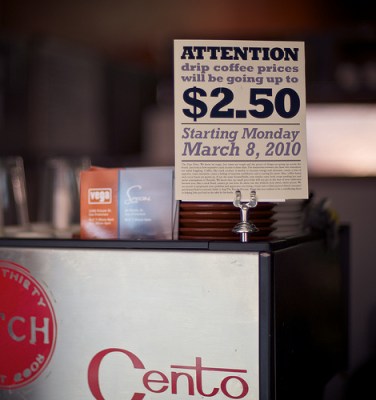Editor’s note: TechCrunch contributor Semil Shah is an entrepreneur interested in digital media, consumer Internet, and social networks. Shah currently works at Votizen and is based in Palo Alto; you can follow him on twitter @semil
I woke up this morning to tweets from Uber customers nationwide who felt taken for a ride, literally and figuratively, after requesting an Uber on one of the busiest nights of the year. Despite the fact the company said as such on their blog and communication channels, riders were apparently not expecting the surcharges to be so exponentially high, ranging between three to over six times the normal fares.
In exchange for providing cars on demand, Uber used its system to find equilibrium within a market where demand outstripped supply, especially a few hours before and midnight. (I’m not a frequent Uber customer, but I used them three times over my recent holiday trip, and each time was flawless; I’ll continue to use the service when I need to.)
Uber’s hangover this morning is more of a harbinger for consumers in general, especially when it comes to goods and services delivered online. Uber’s “surcharges” last night were a classic example of dynamic pricing, or adjusting the price of something relative to the demand and supply, down to the minute or second. The more data a provider has on these inputs, the more likely they are to leverage that data to extract more value from providing equilibrium between supply and demand. Most every consumer is aware of this through searching for and buying airline tickets online, where fares seem to change magically, even mid-search.
Over the past few years, dynamic pricing provided value to consumers, for example, through daily deals. Companies providing these deals help vendors manage inventory and excess supply, using the power of discounting to gin up demand. Starting now, consumers should also prepare to experience the underbelly of this phenomenon, a world where prices for goods and services that are in demand, either in quantity or at a certain time, aren’t the same price for each of us.
Online, dynamic pricing is gaining momentum. eBay auctions and Priceline hidden bids are the overt expression of this. More subtly, items in my Amazon shopping cart went up a bit each day as the holidays approached. Imagine the intricate data companies like Groupon and Living Social have as it relates to how quickly a hot deal “sold out.” All that data could be used just as the airlines have for years, and potentially with even more economic precision. Tickets to Broadway musicals are being sold this way. The National Hockey League is doing it. Companies such as TellApart and HotelTonight, for instance, are already doing this kind of stuff, and upstarts like Black Locus and Predictive Edge are also in the hunt.
In the not-so-distant future, consumers may see more routine goods and services readjust to dynamic pricing. Want a dinner reservation at a specific time at a choice restaurant? Want to book a room on Airbnb in Austin during SXSW, right now? Want to see The Dark Knight Rises opening night, on IMAX? Or, simply, do you want an Uber right away at 8pm every Saturday night, when demand peaks? It’s becoming increasingly apparent that for items with spiked demand around specific times are all susceptible to these kind of extractive calculations.
This reality is the other side of the daily deal market, one not driven by discounts and demand, but rather premiums for things that are scarce. Which brings it all neatly back to Uber. Some riders last night wanted the combination of a guaranteed ride at a time of their choosing, but also at a price that they deemed “reasonable.” Unfortunately, since everyone else also wanted rides around 10pm and 2am last night, the demand so far outstripped the supply that what seem to be gross surcharges were actually automatically generated to make sure a consumer’s willingness to pay matched the good offered. You can’t have your Uber on New Year’s Eve and eat it, too, folks — unless you’re willing to pay up. Brenden Mulligan analyzed the communication breakdown and makes a reasoned, design-inspired case that Uber’s in-app notification of surcharges should have been cleaner, more direct and easier to read.
Uber will no doubt try to make sure this doesn’t happen again (the tweets are not pretty), and people nationwide will continue to use the service, though will now be more careful. Uber still has a strong brand with a loyal following and a strong team. However, this is also a wakeup call for consumers, those who use Uber and in general. As devices and ecosystems enable us to share more and more data about our location and what we truly want at any given time, time-based pricing is simply a natural extension of this grand bargain and is coming to a theater near you. Happy New Year!
Photo Credit: Creative Commons Flickr / Dave Fayram
